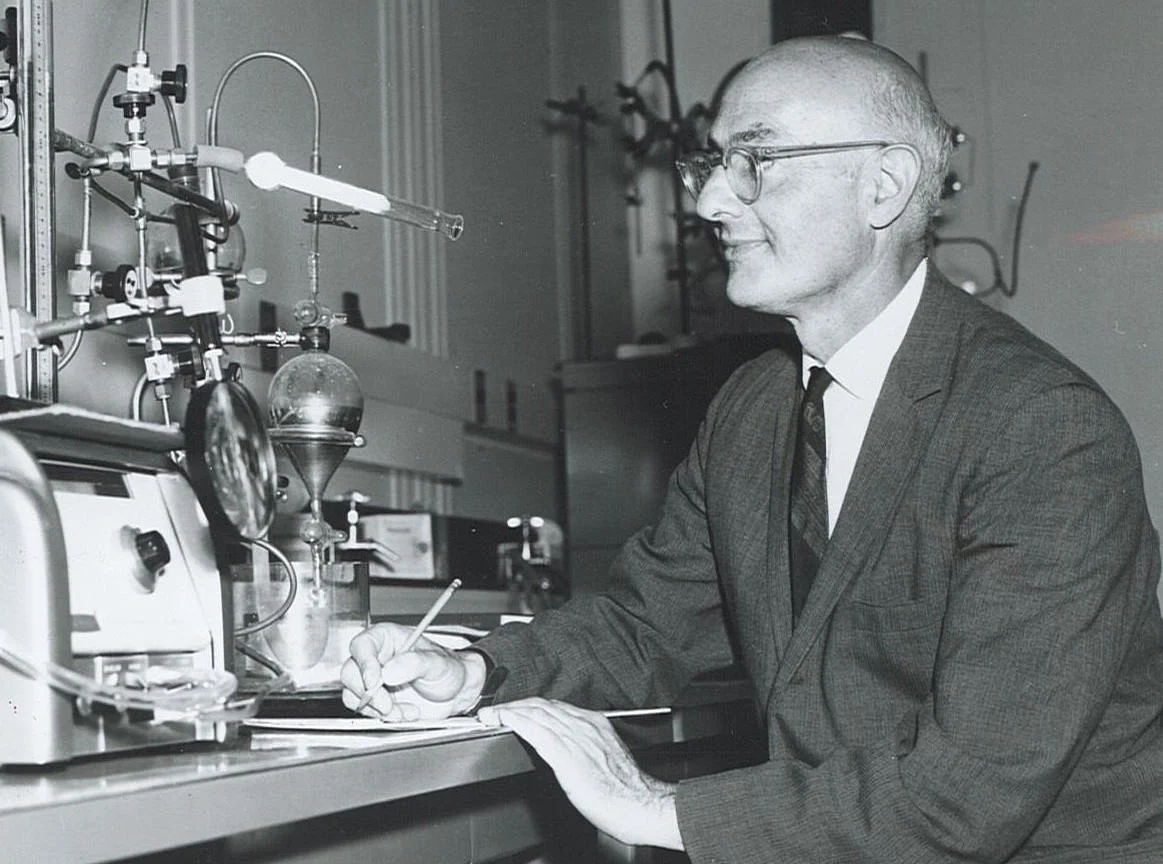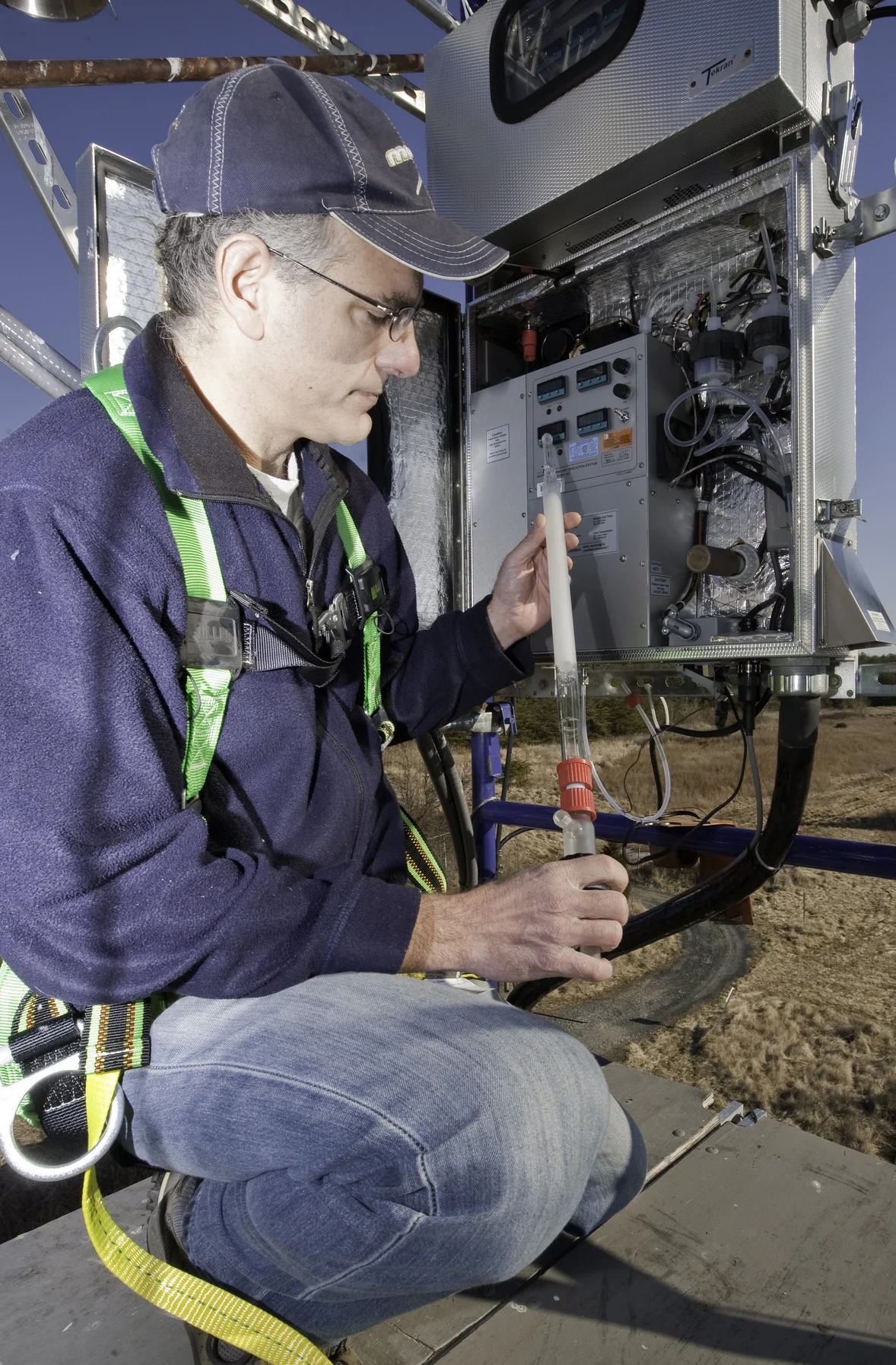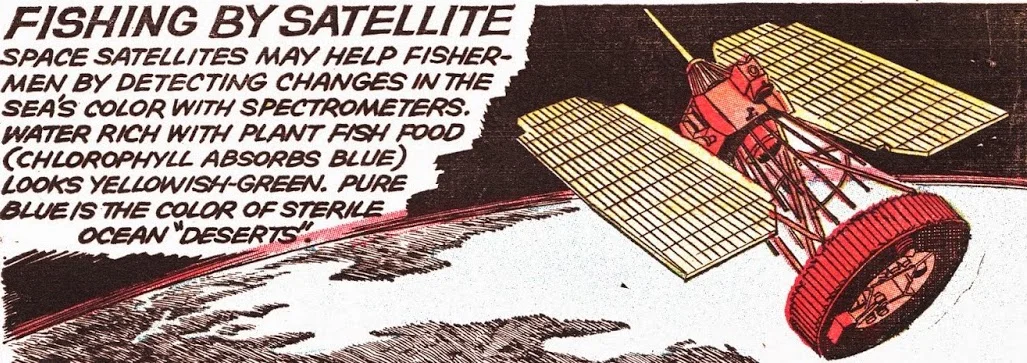"Eliminates Environmental Scare," 1970
Universal Science News, Inc. suggested “Eliminates Environmental Scare” as a headline to accompany this photo of Lester Machta checking instruments used to measure the amount of oxygen in the atmosphere, July 28, 1970. Photo Credit: Environmental Science Services Administration (now NOAA), US Federal Government. Scanned from a print in Roger Turner’s personal collection.
I’m playing with new format, with help from my colleague Gabe Henderson. First, we worked together to recount a now-forgotten environmental worry, based largely on Gabe’s research. Then we each wrote a “moral of the story,” exploring our different ideas about what lessons people should learn from this history. --RT
The Potential Oxygen Deprivation Crisis
When should scientists “go public” with their concerns about potential environmental crises? This became a pressing question in the 1960s. As highly sensitive instruments enabled scientists to detect small changes in the environment, some argued that scientists now bore a social responsibility to provide early warning of potentially-catastrophic environmental change. But what kind of danger, and what degree of proof, was sufficient to justify issuing a public warning?
This dilemma came to the fore in 1966, when geophysicists began to worry about the global depletion of oxygen for two major reasons. First, Charles Keeling’s meticulous observations had established that atmospheric carbon dioxide levels had been rising since at least the 1950s; did burning fossil fuels remove vital oxygen from the atmosphere? Second, Rachel Carson’s book Silent Spring had drawn attention to the persistence and ubiquity of pesticides; was pesticide pollution disrupting the ability of marine life to create sufficient oxygen to sustain life? While the scientists most worried agreed that the problem deserved considerable further investigation, they charted very different courses in sharing their concerns with the general public.
On one hand, geophysicists Lloyd Berkner and Lauriston Marshall kept their concerns insulated within a small group of government scientists. Berkner, one of the most effective and well-respected science policy brokers of the Cold War, and Marshall wrote to President Lyndon Johnson’s science advisor outlining their worries. They also wrote to Robert White, the head of the government’s Environmental Science Services Administration (ESSA), describing oxygen deprivation as a “nasty ecologic problem.” On March 23rd 1966, White validated their concerns, and ESSA and the National Science Foundation soon initiated a three-year study to measure oxygen levels and assess if they had changed significantly since the start of the 20th century. The study was delegated down the scientific bureaucracy to Lester Machta of ESSA and Ernie Hughes of the National Bureau of Standards; it promised to produce a definitive answer by 1970.
Lamont Cole took a much louder course. Already one of America’s most distinguished ecologists thanks to groundbreaking experiments in the 1940s and 1950s, he had been inspired by Rachel Carson’s activism. He agreed with a committee of ecologists who argued, “Rachel Carson's book Silent Spring created a tide of opinion which will never again allow professional ecologists to remain comfortably aloof from public responsibility.” [1] Testifying before Congress in 1966, he described "the alarming side effects of the industrialization that is maintaining and expanding our economy even as the population grows." Cole worried that "we are close to the critical point" where the rate of combustion of fossil fuels would exceed the rate of photosynthesis, while calling for more research and acknowledging that "satisfactory data of the necessary sort do not exist." [2]
Lamont Cole, influential ecologist and environmental activist.
Beyond Capitol Hill, the potential oxygen deprivation crisis became a regular talking point in Cole’s numerous public lectures and national television interviews over the next four years. His concerns were covered in newspapers ranging from the Washington Post and the Boston Globe all the way down to the Biddeford-Saco Journal, a local publication of Biddeford, Maine. Cole was one of many prominent headline speakers at Project Survival, a public “teach-out” in Chicago that began at 7pm on January 23, 1970 and held an audience until 6am the next morning. The event served as a model and inspiration for the Earth Day activities taking place nation-wide in April.
Cole often appeared alongside other prominent activist environmental scientists like Barry Commoner and Paul Ehrlich. Image from Northwestern University Archives via Wikipedia.
Cole’s public presentations provoked a range of reactions including fear, resignation, and skepticism. The editorial staff of the Biddeford-Saco Journal observed, for instance, “Americans do not have enough problems, it seems. There is a war in Vietnam, strife at home, and water pollution. Now a scientist says the country is running out of air to breath – even smog-filled air.” [3]
As environmental activism reached a crescendo with about 20 million Americans participating in Earth Day activities on April 22, 1970, Machta and Hughes were busily writing up the results of their oxygen study. After analyzing seventy-eight air samples taken between 1967 and 1970 using instruments sensitive to “five or six significant figures,” Machta later remembered, they found either no change or changes lower than the uncertainty in the measurements in atmospheric oxygen levels, compared to figures from 1910. [4] These results were published in Science at the end of June, 1970. [5] “Eliminates Environment Scare” read the caption on an ESSA photograph circulated by Universal Science News one month later, which showed “Dr. Lester Machta check[ing] instruments used to determine that the Earth’s oxygen supply is not diminishing.”
While Machta and Hughes had shown that humans were in no immediate danger of running out of oxygen, their findings were consistent with the theory that fossil fuel combustion increased CO2 levels, and also consistent with the theory that free oxygen levels should decrease as fossil carbon was burned. In fact, Charles Keeling’s son, Ralph, later developed a more sensitive technique to measure oxygen levels out to the 7th significant figure, and found that atmospheric oxygen is indeed diminishing, “which is due, in all likelihood,” noted Machta in 1993, “to the burning of fossil fuels.”[4] While the theory of oxygen depletion was fundamentally correct, the magnitude of the effect proved too small to be significant.
--Gabe Henderson and Roger Turner
Gabe Henderson's Interpretation
When Berkner and Marshall decided not to engage the general public about their concerns, they made a social judgment. By this, I mean that they did not rely on some empirical truth to guide their decision – they did not know whether the level of oxygen in the atmosphere had decreased due to industrial activities. Instead, they constructed an image of the body politic as a whole, and somewhere in the process of gauging the very real risks of their “nasty ecological problem” and communicating their concerns to federal scientists, Berkner and Marshall determined that the best course of action was to maintain their silence.
But how should a historian interpret their decision? One could conclude that the scale of environmental and humanitarian risk (i.e. the possibility of future environmental catastrophe on a global scale) outweighed the scale of their own social risk (i.e. their professional reputations could be undermined if they engaged in hasty, excessively alarming statements about the future). According to this line of logic, they should have felt compelled to address the general public given the stakes.
So why didn’t history unfold this way? Why didn’t they warn the general public outside of official channels? I suggest taking a more sympathetic view of their decision. By engaging in reticence, their decision was deemed responsible in that it could help ameliorate public panic while simultaneously avoiding any potential costs associated with premature policy action.
This leads to an important question: should scientists consider the degree to which the public is susceptible to anxiety and alarm? Should a scientist then use their assessment of the general public’s capacity for alarm when determining whether to maintain their reticence? I believe that the oxygen deprivation crisis reveals the precariousness inherent in scientists’ decision to engage the public directly, and showcases how the mere existence of scientific uncertainty can justify either a reticent approach or a more activist one.
Roger Turner’s Interpretation
Gabe and I began discussing this blog post during the run up to the March for Science and the People’s Climate March. For a surprising number of scientists (especially younger ones), these marches were the first time they had ever considered participating in a mass demonstration. In Facebook posts and Twitter conversations, they started to talk about the connections between science and politics, many seemingly for the first time. So I thought, now is a crucial moment to share the history of science, with our stories of how science is entwined with politics, how systems of knowledge production can never be separated from systems of social power.
So then what should we make of this interesting story? Why tell this story at this moment? One reason is simple fascination with the narrative. I love the way that the oxygen deprivation worry has now been just about completely forgotten, though it once attracted attention at the highest levels of government science and national media. I remember my rush of surprise when I saw “Role in solving the oxygen depletion crisis” on a document when I started studying the history of Lester Machta and his Air Resources Laboratory—how could you not be curious to learn more about that?
But the story also raises the issue of how reticent scientists should be about speaking publically. There are plenty of voices on the political right that reflexively use the “environmental scare” label, partly in an effort to shame scientists into self-silencing. And that shaming has been powerfully effective. By suggesting that worrying about environmental impacts is somehow a partisan position that threatens your scientific objectivity, free-market fundamentalists have evidently made many scientists reticent to speak publicly about even exceptionally well-founded theories, especially global warming. (I can’t think of a theory that has been more extensively tested, and supported by more lines of independent evidence.)
I think the story also highlights how important it is to have a diversity of tactics in play in addressing potential environmental problems. The eminence, reticence, and insider status of Berkner and Marshall enabled them to command the attention of Democrat LBJ’s science advisor and then enlist the head of ESSA and the NSF in addressing their concerns. Their willingness to work inside was certainly an important part of producing a scientifically credible answer. But so was Cole’s external, public advocacy. Republican Richard Nixon was a reluctant environmentalist at best—more accurate would be to say that he cared far more about his reelection than about the anti-regulatory ideology that animated part of his political base. Without the public pressure for environmental clean-up generated, in part, by emotional anxieties over the effects of pollution, Nixon would never have supported the EPA, signed the Clean Air and Clean Water Acts, and established a new institutional stronghold for environmental science within the federal government. These actions saved lives—plant and animal as well as human. The scientist speaking passionately and publicly about his anxieties deserves some credit there.
Citations:
1. Miller, Richard and John Reed, "Summary report of Ecology Study Committee with Recommendations for the Future of Ecology and the Ecological Society of America," Bulletin of the Ecological Society of America 46, 2 (June 1965): pp. 61-82.
2. Cole, Lamont, Statement to the Senate, Committee on Interior and Insular Affairs. Ecological Research and Surveys, Hearing, April 27, 1966 (Serial 65-624). Washington: Government Printing Office, 1966, p. 65.
3. “Diminishing Air Adds to Woes of Country,” Biddeford-Saco Journal, 9 January 1968
4. Interview of Lester Machta by Julius London, 31 October 1993. Tape Recorded Interview Project, American Meteorological Society and University Corporation for Atmospheric Research, p. 11.
5. Machta, L. and E. Hughes, "Atmospheric Oxygen in 1967 to 1970," Science 168, 3939 (June 26, 1970): pp. 1582-84.
About the Authors
Dr. Gabe Henderson is soon to be the Associate Historian at the Center for History of Physics, American Institute of Physics. He is working on a book that will examine how American geophysicists' reactions to environmental claims during the 1960s and 1970s informed the development of climate policy during the late 1970s and early 1980s.
Dr. Roger Turner is a Research Fellow at the Chemical Heritage Foundation and the curator of this blog.








